| | | | | | | | | | | Axios What's Next | | By Jennifer A. Kingson, Joann Muller and Alex Fitzpatrick · Nov 23, 2022 | | Joann has all the fun: Last week she was in San Francisco riding in a robotaxi — and this morning she gives us her report. Today's newsletter is 1,053 words ... 4 minutes. | | | | | | 1 big thing: A shakeout in the world of robotaxis | 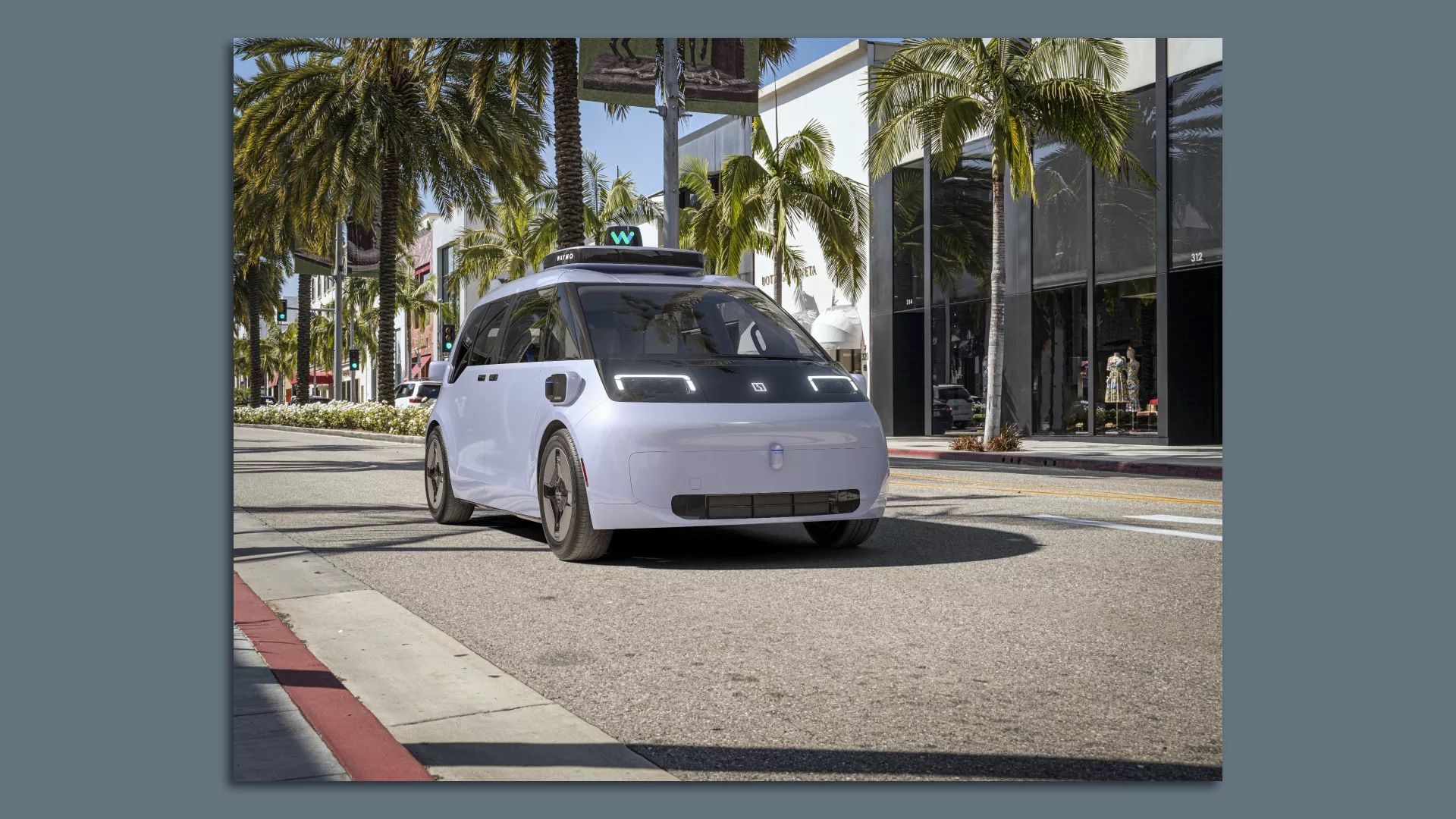 | | | Waymo plans to deploy robotaxis co-developed with Zeekr, an electric vehicle brand owned by China's Geely Automobile Holdings. Photo courtesy of Waymo | | | | Cruise and Waymo are plowing ahead with plans to bring robotaxis to more cities, despite growing disillusionment among investors and automakers about the timeline for self-driving cars, Joann Muller writes. Why it matters: The two companies already operate driverless taxis in San Francisco and Phoenix. - If they can exploit that early lead by quickly scaling ride services across multiple cities, they have a chance to prove the economics of self-driving technology are viable and that it's not just an expensive science experiment.
Catch up quick: Other key players are shutting down, merging or paring back. - Ford and Volkswagen last month pulled the plug on their autonomous vehicle joint venture, Argo AI.
- AV delivery startup Nuro laid off 20% of its workforce, and two leading AV tech suppliers announced a merger.
- Even Waymo's parent, Alphabet, is being pressured by an activist investor to reduce losses at its self-driving unit.
- "Profitable, fully autonomous vehicles at scale are a long way off," says Ford CEO Jim Farley.
Far from retreating, Waymo and General Motors-backed Cruise are hitting the accelerator. - "We're going to continue to make sure we don't constrain the commercialization because we have the lead right now," GM CEO Mary Barra told investors last week.
What's next: After San Francisco, Cruise plans to expand robotaxi service to Phoenix and Austin, Texas, by the end of December. - Several more cities are planned for 2023, and Cruise CEO Kyle Vogt says the company aims to hit $1 billion in revenue by 2025.
Waymo is expanding too, announcing that Los Angeles will be its third market (after Phoenix and San Francisco). - It's also unveiling a dedicated robotaxi co-developed with Zeekr, an electric vehicle brand owned by China's Geely Automobile Holdings.
The big picture: This could be the beginning of an industry-wide shakeout in which the leaders pull away from the pack, similar to what happened in the auto industry in the first half of the 20th century. Read the full story. |     | | | | | | 2. Hailing a taxi with no one behind the wheel | 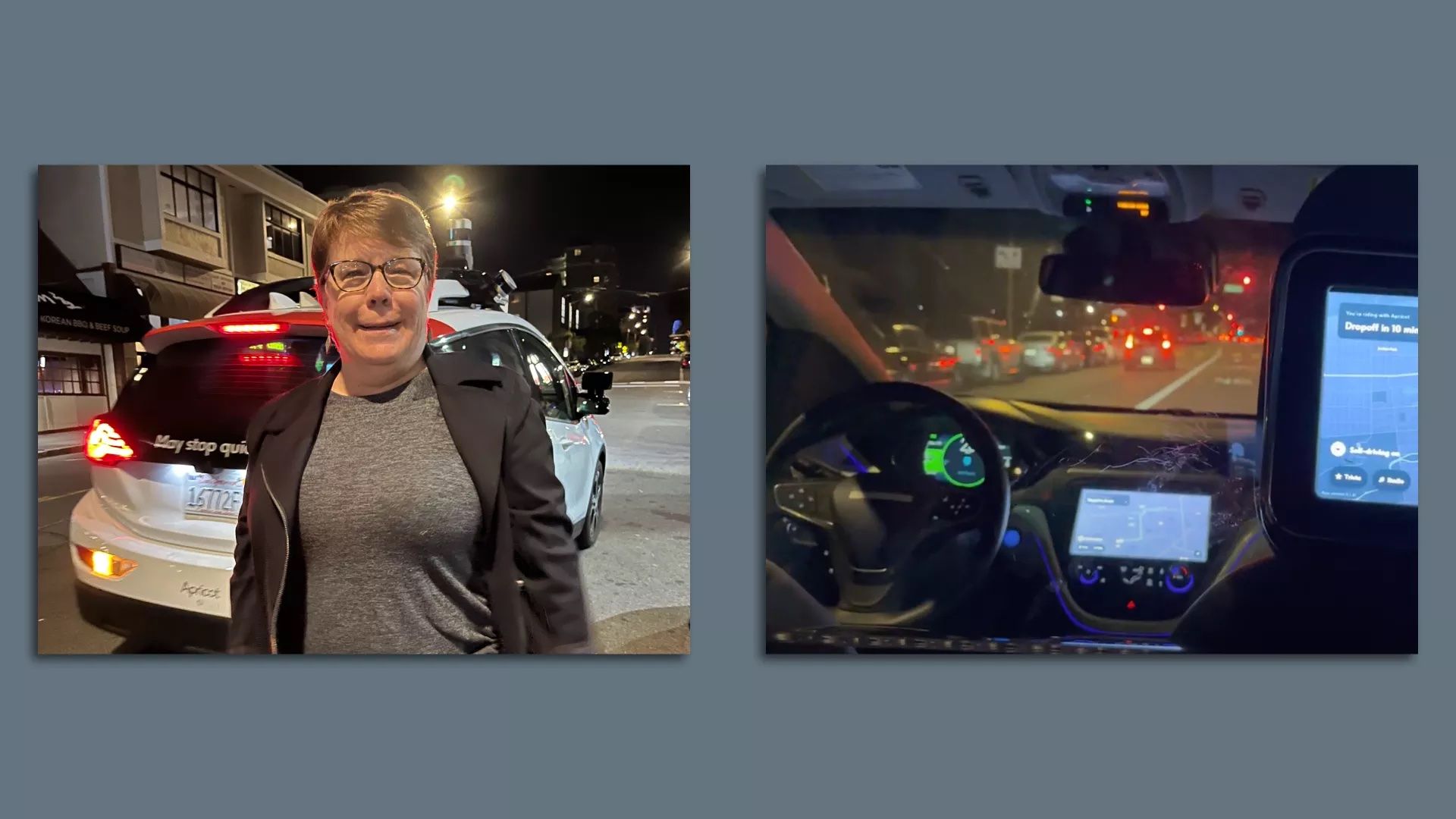 | | | Joann took an evening ride in a Cruise robotaxi in San Francisco. Photos by Holly Bogin (left) and Joann Muller (right) | | | | I took a ride in a Cruise driverless taxi in San Francisco last week and, for the first time, I thought, "This might really happen!" Joann writes. Why it matters: Self-driving cars have been promised for years, but the technology is hard, regulations are spotty, and the business case has yet to be proven. - And yet, here I was, in the back seat of a robotaxi, being chauffeured around San Francisco by a ghost.
Details: I met my friend Holly for dinner and invited her to come along as I tried out Cruise's robotaxi. - Around 9 p.m., I used my iPhone to summon a ride to Holly's son's house using the Cruise app (it's not yet available on Android), and was advised that demand was high so they'd notify me when a car was available.
- Only a minute or two later, the app said a car named "Apricot" was on the way.
We waited in front of the Hotel Kabuki in Japantown, but the car blew right past us, stopping about 3o feet ahead, apparently the designated pickup spot. - We approached the car, used the app to unlock the doors, then climbed in to the back seat.
- A disembodied voice reminded us to buckle up, and then I pushed the "start ride" button on the tablet in front of me.
How it worked: Apricot navigated the city with confidence, handling unexpected snags — such as a pedestrian in dark clothes emerging from behind an idling bus — with ease. - Another time, Apricot waited cautiously while two people got into an Uber that was blocking traffic. When the couple laughed and pointed at the driverless car, I rolled down the window and waved, but was scolded by Apricot to keep my hands and arms inside the car at all times.
- We appreciated Apricot's gentle handling of speed bumps on some of the city's hilliest streets.
- Yet the car wasn't overly cautious, either. Apricot swung wide to pass a car that was slowing to turn right. Holly compared it to the way an impatient driver would behave.
What's next: Until now, Cruise has been limited to nighttime fares in San Francisco, when traffic is light, but it just got permission to extend the service to daylight hours as well. The bottom line: I felt safe and comfortable during my ride, and can't wait to try it again when it's light outside. Read the rest. |     | | | | | | 3. Why tech's giants aren't rushing to clone Twitter | 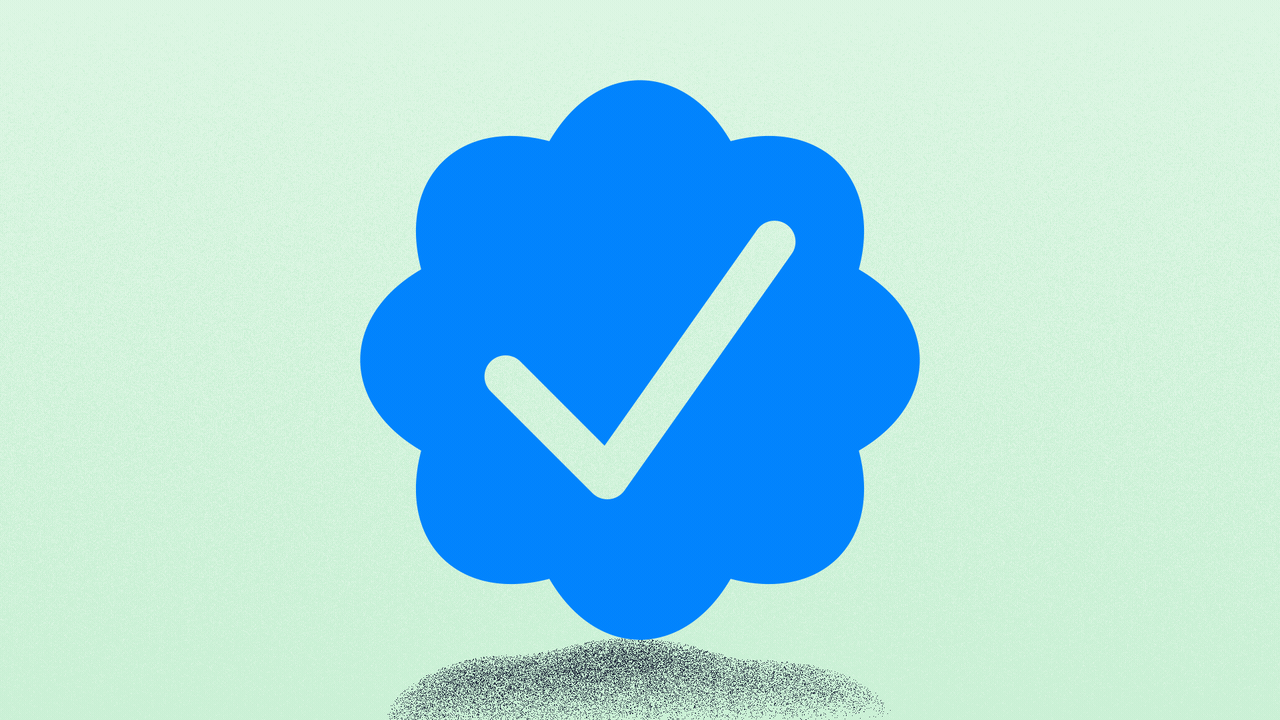 | | | Illustration: Brendan Lynch/Axios | | | | While Twitter's turmoil has sparked waves of interest in alternative social networks, tech's biggest firms have stayed conspicuously aloof from the field, Ina Fried writes for Axios Login. Between the lines: Cloning Twitter would not be a huge technical challenge for companies such as Meta, Google and Microsoft that already have a massive cloud infrastructure. Yes, but: For these companies, a Twitter-like service would bring big political, social and legal headaches with little promise of a financial payoff. - Sources at Meta, Google and Microsoft suggest that they have no appetite for building a Twitter alternative.
In the void left by the giants, a bunch of upstarts are vying for Twitter's user base, including the open-source Mastodon and Hive, along with several right-leaning sites: Gab, Parler and Donald Trump's Truth Social. - A new entrant is Post News, created by former Waze CEO Noam Bardin. The site has more than 125,000 people on its waitlist, according to an email Bardin sent to beta users.
Read the full story. |     | | | | | | A message from Axios | | A framework for optimizing workplace communications | | |  | | | | Essential communications — those key updates that move a project forward, or keep the org aligned on key goals — are getting missed. And that's quickly become the culprit of lost time, engagement, and productivity. Axios HQ's Smart Brevity workbook breaks down the three details that are most consequential, interesting, and engaging in any essential communication. Get the free workbook | | | | | | 4. A robot that can win at "Go" | 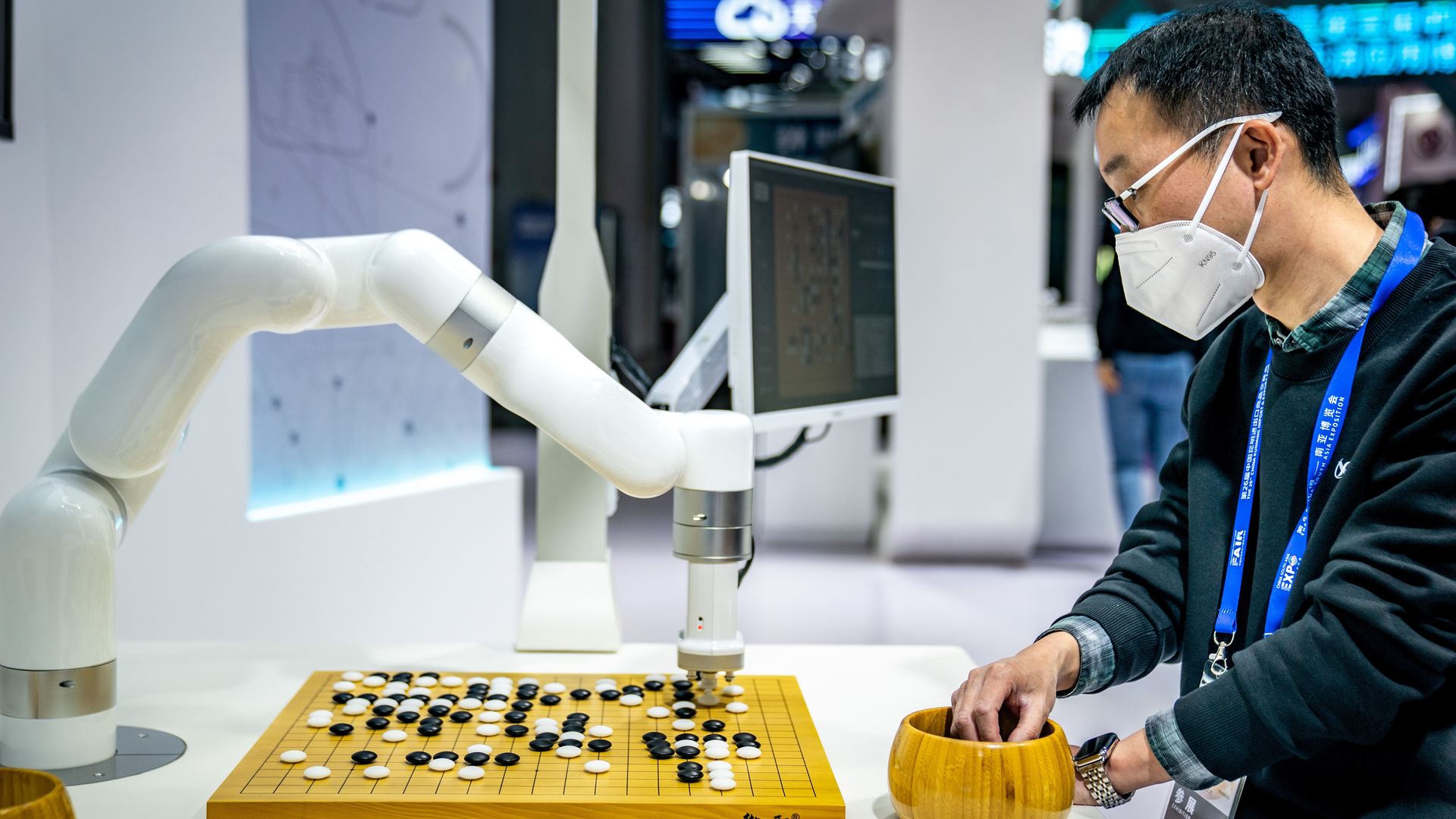 | | | An exhibitor plays the game of Go with a robot at the iFlyTek booth at the 6th China-South Asia Exposition, in China's Yunnan province this month. Photo: Hu Chao/Xinhua via Getty Images | | | | Teaching a robot to play "Go," a two-person strategy game, is considered a crowning achievement in artificial intelligence. - A landmark happened in 2016, when AlphaGo, an AI program created by Google's DeepMind, defeated the strongest human player in the world.
- iFlyTek, a Chinese IT company best known for voice recognition (and its ties to the government's surveillance), has been trying to compete with AlphaGo.
|     | | | | | | 5. At last, a luxury hotel — for bunnies | 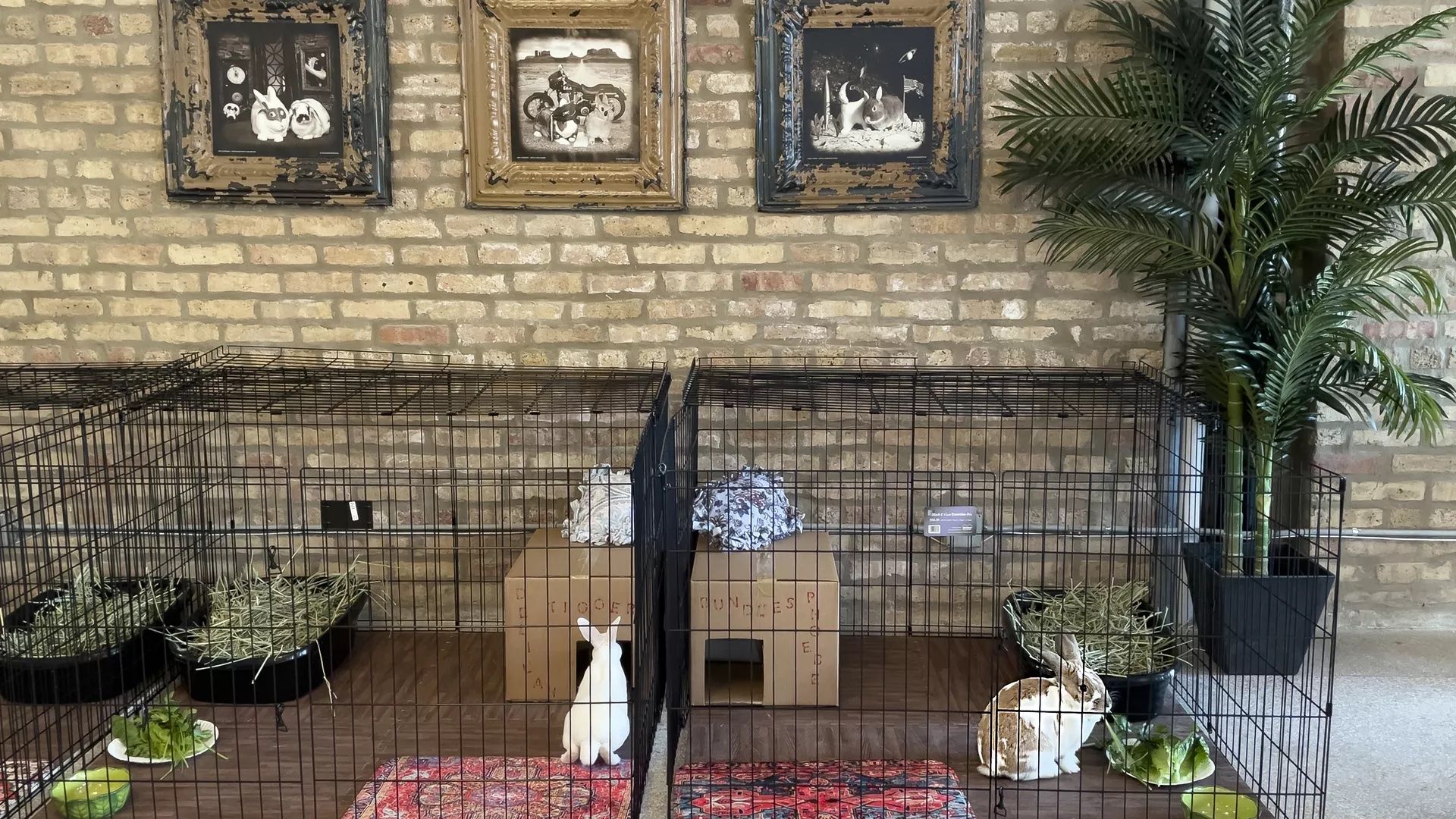 | | | Bunny rooms at Hare BnB in Rogers Park, Chicago. Photo: Toni Greetis, courtesy of Red Door Animal Shelter | | | | An upscale hotel for rabbits — hoppily named Hare BnB — opened this week in Chicago, Monica Eng writes for Axios Chicago. Why it matters: The snazzy bunny hutches will help fund the work of no-kill Red Door Animal Shelter, which runs the BnB and houses rescued rabbits, dogs and cats right around the corner. The amenities: Four-pawed guests are treated to their own 4x4 room with a chewable privacy hut, Persian rug, twice-daily salads and all the hay they can eat. - Plus, optional spa treatments (i.e. grooming) and no barking dogs.
Share this story. |     | | | | | | A message from Axios | | Smart communications that boost workplace productivity | | | 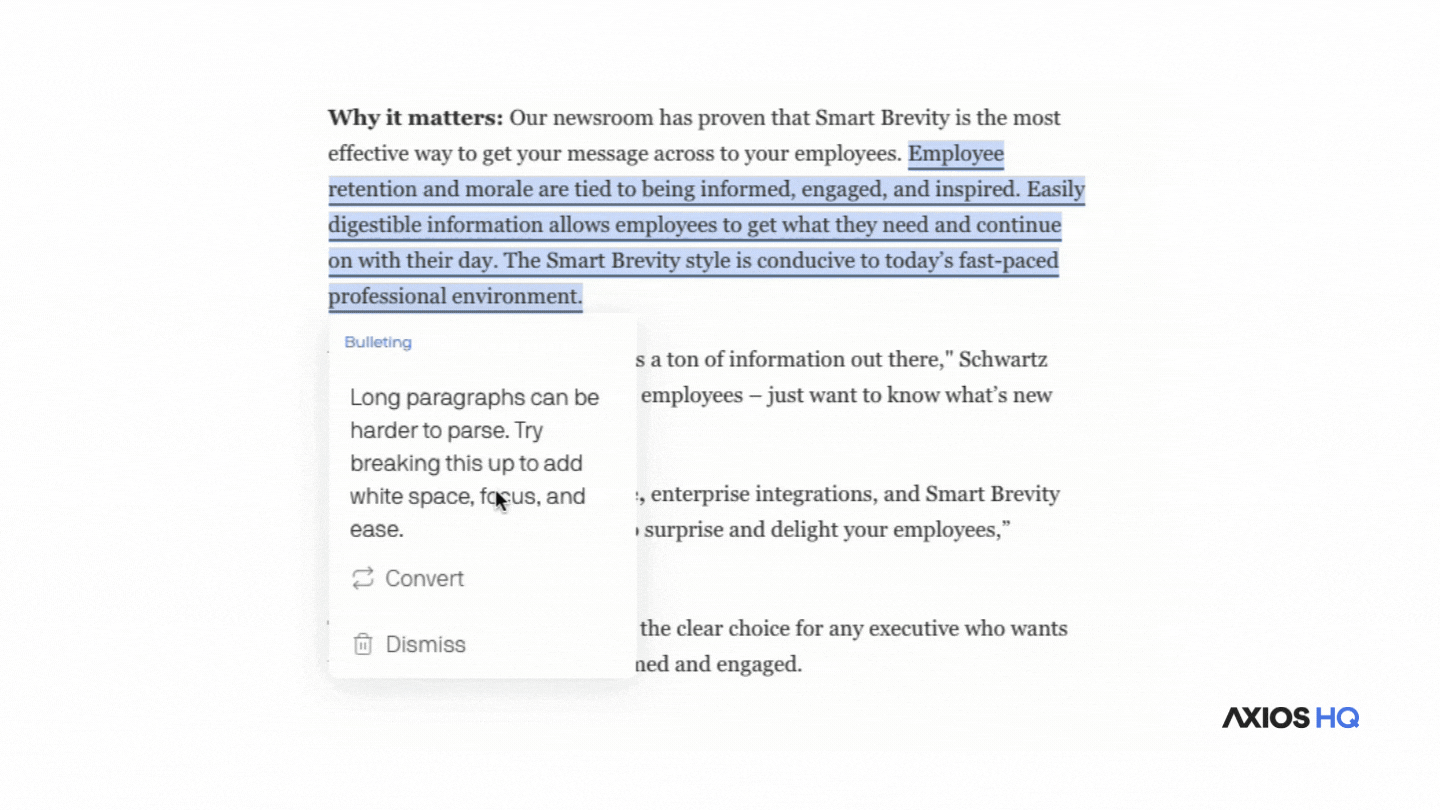 | | | | Success, productivity, and growth all hinge on a leader's ability to clearly communicate priorities. - We built Axios HQ — an AI-powered communications platform — to help leaders send smart, transparent updates across their organizations.
See how it works | | | | Have a great Thanksgiving! We'll be back in your inbox on Monday. In the meantime, please join me in thanking What's Next copy editor Amy Stern — and ask your friends to sign up for our newsletter here. |  | | Are you a fan of this email format? Your essential communications — to staff, clients and other stakeholders — can have the same style. Axios HQ, a powerful platform, will help you do it. | | | | | | Axios thanks our partners for supporting our newsletters. If you're interested in advertising, learn more here.
Sponsorship has no influence on editorial content. Axios, 3100 Clarendon Blvd, Arlington VA 22201 | | | You received this email because you signed up for newsletters from Axios.
Change your preferences or unsubscribe here. | | | Was this email forwarded to you?
Sign up now to get Axios in your inbox. | | | | Follow Axios on social media:    | | | | | |









No comments:
Post a Comment